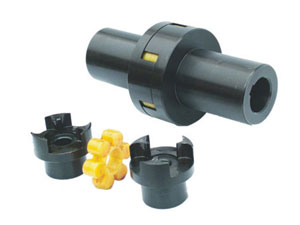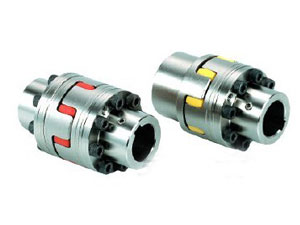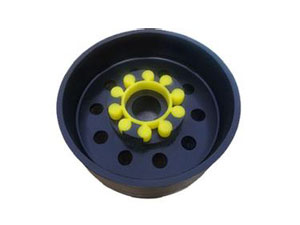The characteristics of plum coupling
The quincunx coupling uses a quincunx-shaped elastic element to be placed between the two halves of the coupling claw to complete the coupling of the two halves of the coupling.The two halves of the coupling have the same structural standard, and each has a plurality of protruding claws on its end faces, which are sequentially placed between the circular protruding parts of the plum-shaped elastic element.And through the touch between them, the torque is transmitted from the driving shaft to the driven shaft.The method of quincunx-shaped elastic elements is not limited to circular convex parts, but also rectangular and long arc convex parts.
In addition to rubber, the plum-shaped elastic element is made of polyurethane elastomer.The elastic element of the quincunx elastic coupling only needs half of the convex part to receive the load when it rolls in one direction, which has the effect of transmitting torque.The load distribution on the touch surface of the torque transmission pawl is related to the shape of the touch part. As the difference between the surface and the inside diameter increases, the unevenness of the load distribution also increases.In addition, when the two halves of the coupling have a relative displacement and there is a space between the working surface of the elastic element and the half-coupling claws, the unevenness of this load distribution will be further added. Not only a claw working surface The load spread on the surface is uneven, and the load between the loaded claws also tends to be uneven.
The plum coupling is characterized by a small number of parts, a small appearance standard, simple manufacturing of elastic elements, and high load-bearing capacity. However, when assembling and disassembling, it is necessary to move the two halves of the coupling in the axial direction.




